Insights and news from the ATOM Mobility team
We started our blog to share free valuable information about the mobility industry: inspirational stories, financial analysis, marketing ideas, practical tips, new feature announcements and more.
We started our blog to share free valuable information about the mobility industry: inspirational stories, financial analysis, marketing ideas, practical tips, new feature announcements and more.
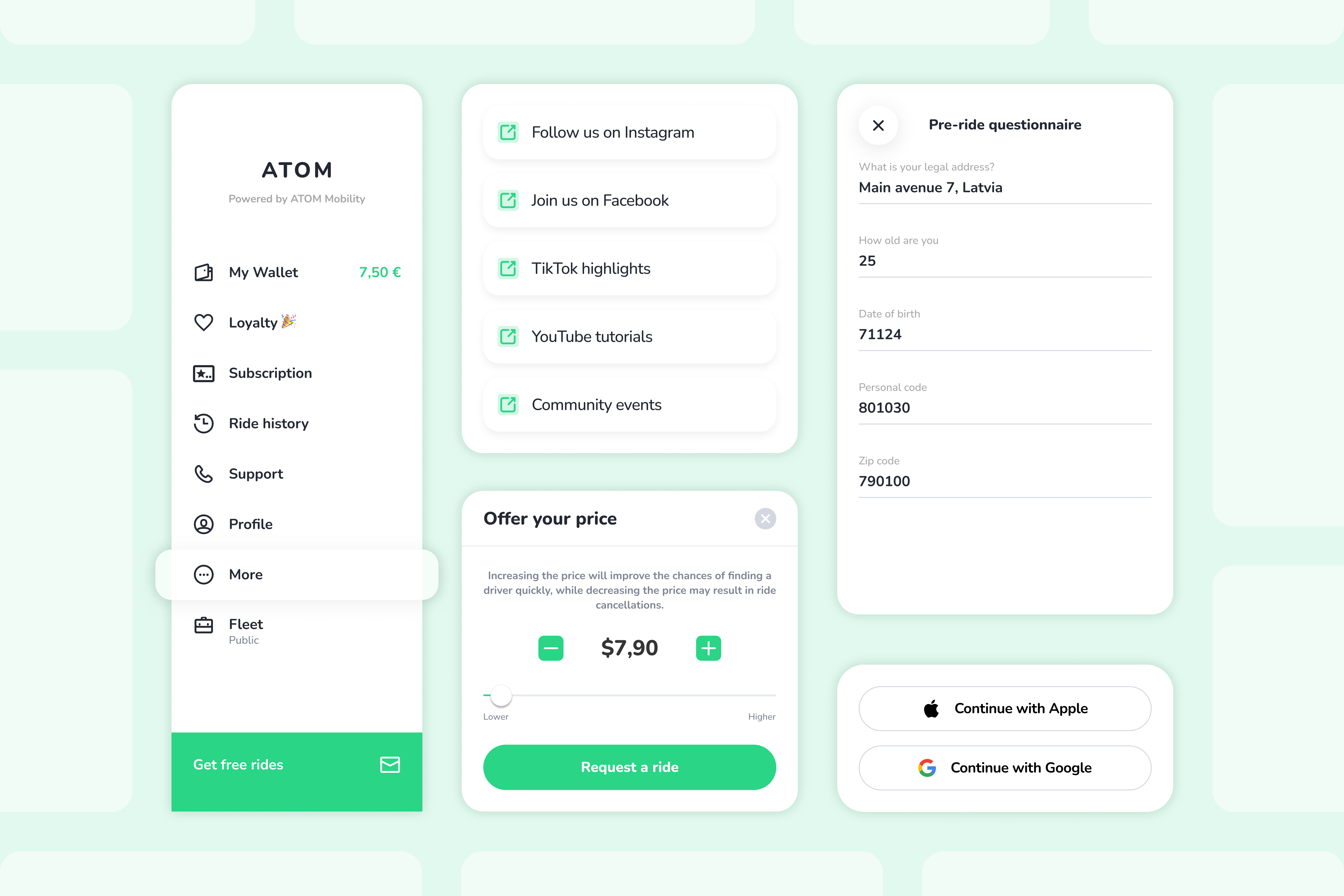
🚀📱2025 was all about automating more and reducing friction across mobility. ATOM Mobility introduced OpenAPI, new sign-in flows, a rental web-booker, smarter fleet automation, and a wide range of new hardware and payment integrations. A faster, more flexible, more scalable mobility platform - built for operators who want to grow.
2025 has been a defining year for shared mobility, digital rentals, and ride-hailing. Competition is stronger, operational costs are rising, and users expect instant, reliable digital experiences. Operators who succeed are the ones who automate more, reduce friction, and stay flexible with hardware, payments, and integrations.
This year, ATOM Mobility shipped a series of features designed to help operators achieve exactly that:
grow revenue, reduce costs, improve fleet quality, and scale into new markets with less complexity.
Here are the 10 most impactful (out of more than 70) features ATOM Mobility released in 2025, and why they matter.

The launch of ATOM’s OpenAPI marks a major step forward for operators seeking greater flexibility, automation, and integration possibilities.
What it is
A fully documented API layer allowing operators and partners to build custom flows, integrations, booking systems, analytics dashboards, or MaaS connections on top of ATOM Mobility.
Who it helps
All verticals: micromobility, car-sharing, moped sharing, rentals, ride-hail, and enterprise partners.
How it works
OpenAPI enables third-party developers to build on top of the ATOM Mobility infrastructure, allowing seamless integrations with external apps, internal tools, and automated workflows. With OpenAPI, operators can extend their service in almost any direction: a partner app (like FreeNow or Uber) can show your vehicles, unlock them, and process payments on your behalf; or internal systems can trigger automated actions - such as sending a survey email after every completed ride. The possibilities are nearly unlimited, giving operators full flexibility to innovate and scale however they choose.
Why it matters
- Enables deeper integrations with partners and local platforms
- Supports custom business logic and automations
- Makes it easier to enter new markets with local-specific requirements
- Opens the door to MaaS distribution and enterprise collaborations

Across mobility, the registration flow is often the first point of friction. ATOM Mobility introduced modern authentication options to simplify onboarding.
What it is
One-tap sign-in using Apple ID or Google Account instead of relying solely on SMS verification.
Who it helps
All operators - especially those targeting tourists, or markets with unreliable SMS delivery.
How it works
When creating a new account or logging in, users can choose to log in/register using Apple ID or Google Account - this will allow account creation in just 2 taps.
Why it matters
- Faster user onboarding experience -> happier rider -> more frequent rides
- Fewer SMS-related issues (and lower SMS related costs) and failed verifications
- Reduced support load from login problems

What it is
A customizable slot in the app menu where operators can add up to five external links - websites, ecommerce pages, tour pages, extra FAQ pages, social media, partner offers, etc.
How it works
- Enable in Settings → System preferences → External links
- Add titles + URLs
- Links automaticaly appear in the app under “More”
Value for operators
- A space where you can display any information you consider important for the user
- Supports cross-promotion and partnership campaigns
- Allows communication updates without app releases
- Creates additional monetisation opportunities, such as launching your own e-commerce or merchandise shop

What it is
A form that users must complete before starting a ride - ideal for compliance, reporting, invoicing, or gathering important data.
Who it helps
Operators needing regulatory data, reporting, consent collection, or structured user feedback.
How it works
Create a question (or several) in “Customer form” -> Group questions into a pre-ride form -> Assign a form to specific vehicle models/classes.
Once completed, the customer must answer predefined questions before starting the ride. Their responses appear in both customer and ride exports. For example, you can ask for a personal ID code, legal address, or any other required information.
Value for operators
- Helps meet regulatory or municipal requirements
- Ensures correct invoicing details
- Provides a structured way to capture essential user data
What it is
Automatic payout splitting: driver earnings go to the driver’s payout account, and platform commission goes to the operator - all processed automatically after each ride.
Who it helps
Ride-hail operators using Stripe or Adyen.
How it works
- Operator has a Stripe/Adyen merchant account
- Drivers onboard as payout recipients
- After completed rides, payouts split automatically
- Supports mixed payment methods (cash and non-cash)
Value for operators
- Reduces manual payout work
- Minimises accounting errors
- Improves driver experience through transparency and instant pay out
- Makes scaling easier when the driver base grow
What it is
A tool to override or manually set a vehicle’s GPS position when IoT data is unavailable (no IoT placed on the vehicle at all) or inaccurate.
Who it helps
Operators with underground parking, poor GPS coverage, or long-term rentals without IoT can use this setup. A typical scenario is long-term bike rental without IoT: the user completes ID verification, payment, and booking in the app, then sees the vehicle assigned to a predefined location (station) where it is picked up and later returned. This serves as a workaround for vehicles that do not support IoT or where adding IoT device is too costly.
How it works
Edit vehicle → update “Location” field. The system assumes this as the correct coordinate. Works for individual vehicles or via mass import.
Value for operators
- Avoids user frustration when vehicles appear in the wrong location
- Supports business modesl with fleets operating without IoT devices
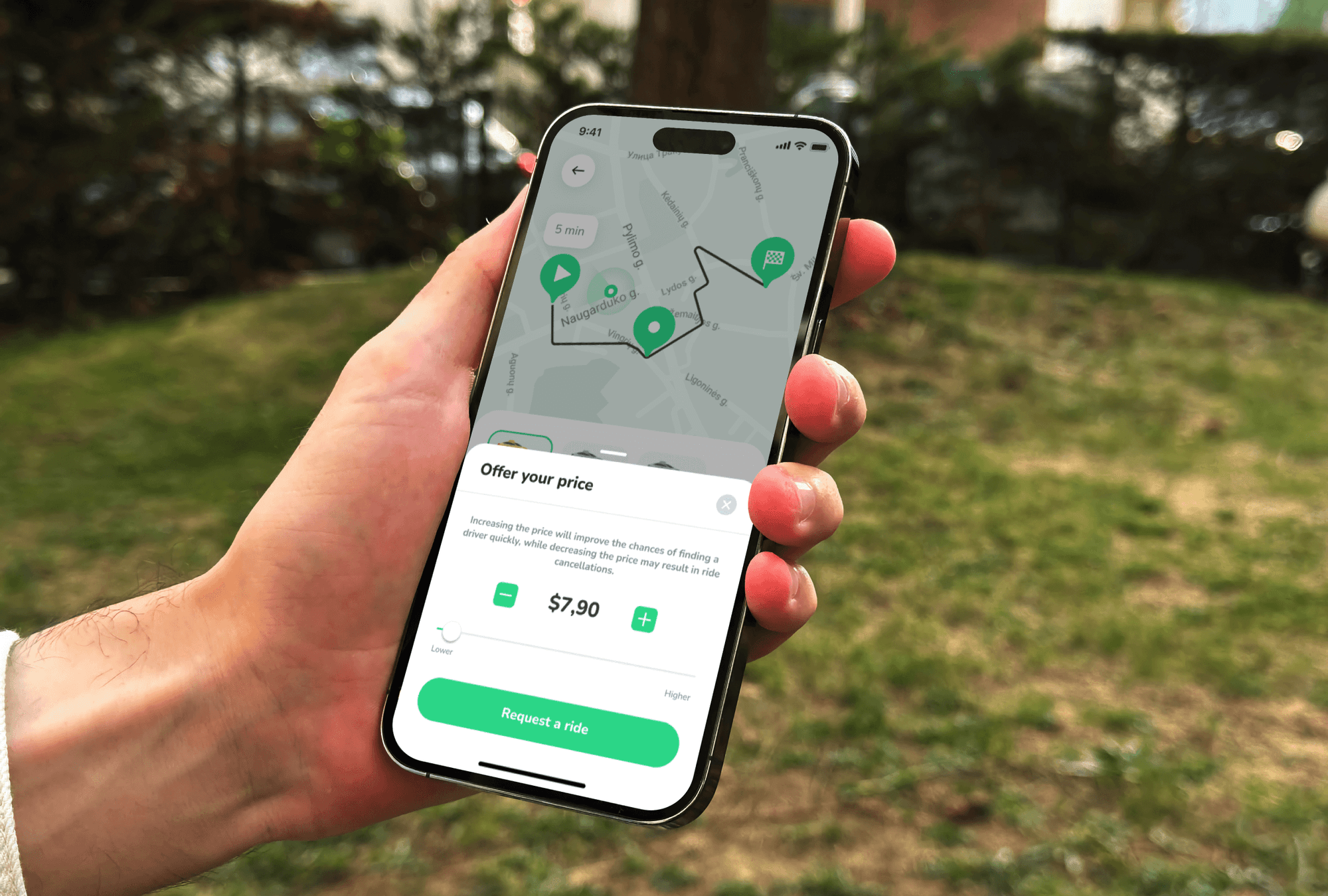
What it is
A flexible pricing feature that lets passengers propose their own fare - higher or lower than the system-calculated price, within limits set by the operator. Drivers see the offer instantly and can choose to accept or reject it.
Who it helps
Ride-hailing operators in competitive, price-sensitive, or highly dynamic markets where price shifts demand quickly.
How it works
When requesting a ride, the user selects “Offer your price”. A slider or +/– buttons allow them to adjust the fare within operator-defined boundaries. If the user lowers the price, the app explains that the offer may reduce the chance of driver acceptance.
Drivers see a clear banner showing whether the rider is offering more or less than the standard fare. Drivers can accept or decline based on their preference.
Operators can enable or disable the feature per vehicle class.
Why it matters
- Creates a clear differentiator in markets dominated by fixed-fare competitors
- Helps convert riders who compare multiple apps before booking
- Gives drivers more control over their earnings and decisions, improving transparency and satisfaction
- Supports better ride matching during off-peak hours or less profitable routes
- Allows operators to experiment with more flexible pricing strategies without changing their core fare model

What it is
A lightweight, embeddable booking widget that lets customers reserve a rental vehicle directly from your website - without installing the mobile app first. It’s designed to capture spontaneous bookings, convert website visitors, and unify online and in-app rental experiences.
Who it helps
Car, moped, and bike rental operators, as well as hospitality and tourism partners such as hotels, resorts, coworking spaces, real-estate developers, and travel service providers.
How it works
Every operator receives a branded rental URL: merchantname.atommobility.com/rent
Users select their area, vehicle type, and rental period directly in the widget. Once confirmed and the account created, the booking syncs automatically into the ATOM Mobility dashboard. Customers see a confirmation screen with a QR code to open the booking in the mobile app. Payment, ID verification, and vehicle unlock actions are completed in the ATOM Mobility-powered app before the trip begins.
The widget automatically adapts to the operator’s brand color for a visually seamless integration. In the dashboard, each booking displays its source: App, Web, or Booker - helping operators track where rentals originate.
Why it matters
- Converts first-time users browsing your website into paying customers - without forcing an app install
- Enables plug-and-play rental flows for partners such as hotels, rental desks, cafés, coworking spaces, or tourist spots
- Supports QR-based rental journeys from physical locations
- Reduces friction for users who want a fast, simple booking experience
- Helps operators expand distribution with minimal effort, unlocking new sales channels
- Unifies online and mobile rental flows under a single backend and operational system
Demo: https://app.atommobility.com/rental-widget

What it is
Bad user experiences often happen when several riders encounter the same faulty vehicle. ATOM Mobility now prevents this automatically. Automation rules detect problematic vehicles and instantly set them to “Needs investigation,” hiding them from the user app so the operator can inspect the vehicle before the next rider can take it.
Who it helps
Sharing and rental operators managing medium or large fleets.
How it works
System monitors low ratings, repeated short rides, and user reports. When triggered, it:
- creates a maintenance task
- switches vehicle status
- hides the vehicle from users
Why it matters
- Prevents recurring complaints from the same issue
- Reduces refunds and reputational damage
- Helps maintain a healthier, more reliable fleet
- Automates routine operational checks
What was added
2025 brought a wave of new integrations that give operators more flexibility in choosing hardware, payments, charging, and regulatory tools. What was added:
- Ridemovi IoT
- Wave payment gateway
- Linka smart lock support
- 2Hire IoT
- Kuhmute charging stations
- Eskiz.uz OTP service
- Atmos payment gateway
- Chiron API (regulatory)
- Fitrider charging station
- Azericard payment gateway
Why it matters
- Easier entry into markets with local payment or OTP requirements
- More hardware options for scooters, bikes, e-bikes, and cars
- Better compatibility with charging infrastructure
- Reduced integration time when expanding
- Support for regulatory compliance where required
These ten features represent only a small selection of what we delivered this year. In total, our team shipped more than 70 new features, dozens of integrations, and countless small improvements that quietly make the platform faster, more stable, and more enjoyable for operators and end-users every single day. Behind each release is a team focused on one idea: helping entrepreneurs build stronger, more efficient, and more profitable mobility businesses.
And we’re just getting started.
Our 2026 tech pipeline is already packed with ambitious and exciting solutions - from deeper AI-powered automation to smarter fleet intelligence and new tools that will change how operators run mobility services. We're looking forward to pushing the industry even further together.

👉 ATOM Connect 2025 is an exclusive shared mobility networking event hosted by ATOM Mobility in collaboration with INVERS. This focused gathering will bring together industry leaders, innovators, and decision-makers from Europe's car-sharing and car-rental sectors to explore the future of shared mobility.
What happens when professionals from Europe’s car sharing and car rental industries gather under one roof? You get a day filled with fresh ideas, insightful discussions, and valuable connections that help shape the future of mobility. That’s what awaits at ATOM Connect 2025 - a dedicated industry event hosted by ATOM Mobility in partnership with INVERS.
This year’s gathering takes place on October 30, 2025, in Riga, Latvia, at the panoramic top floor of the AC Hotel by Marriott. With views stretching across Riga’s historic Art Nouveau district, the setting offers an inspiring backdrop for meaningful conversations about the next steps in shared mobility.
Date & Time: October 30, 2025, from 15:00 onwards
Location: AC Hotel by Marriott, Riga (top floor with panoramic views)
Hosts: ATOM Mobility & INVERS
Format: Expert talks, interactive Q&A, networking sessions, and evening drinks
Topics covered:
- Market insights from INVERS
- Scaling car sharing businesses
- Digital transformation in rentals
- Corporate mobility opportunities
- Eastern Europe’s shared mobility landscape
Learn from industry experts
The agenda is designed to address today’s most relevant mobility challenges. Expect data-driven insights from INVERS, practical strategies for scaling car sharing operations, discussions on digital rental solutions and corporate mobility, plus a closer look at the unique opportunities and challenges in Eastern Europe.
The event will also be joined by BYD, one of the world’s fastest-growing electric vehicle makers, who will showcase their innovative, affordable EVs at our event.
Build valuable connections
ATOM Connect 2025 is a focused gathering that brings together operators, rental businesses, and mobility experts from across Europe. With a mix of talks, networking breaks, and an evening reception, the event offers the perfect setting to exchange experiences, discuss challenges, and explore future partnerships.
If you’re active in car sharing or rental industry and want to stay ahead in a rapidly evolving market, ATOM Connect 2025 is a must-attend event. Together with INVERS, we’re creating a space where the European shared mobility community can connect, learn, and look toward the future.
👉 Save the date and request your spot today*: https://www.atommobility.com/atom-connect-2025
*Please note: ATOM Connect 2025 is intended for shared car mobility and car rental industry professionals. Registration requests will be reviewed before confirmation.
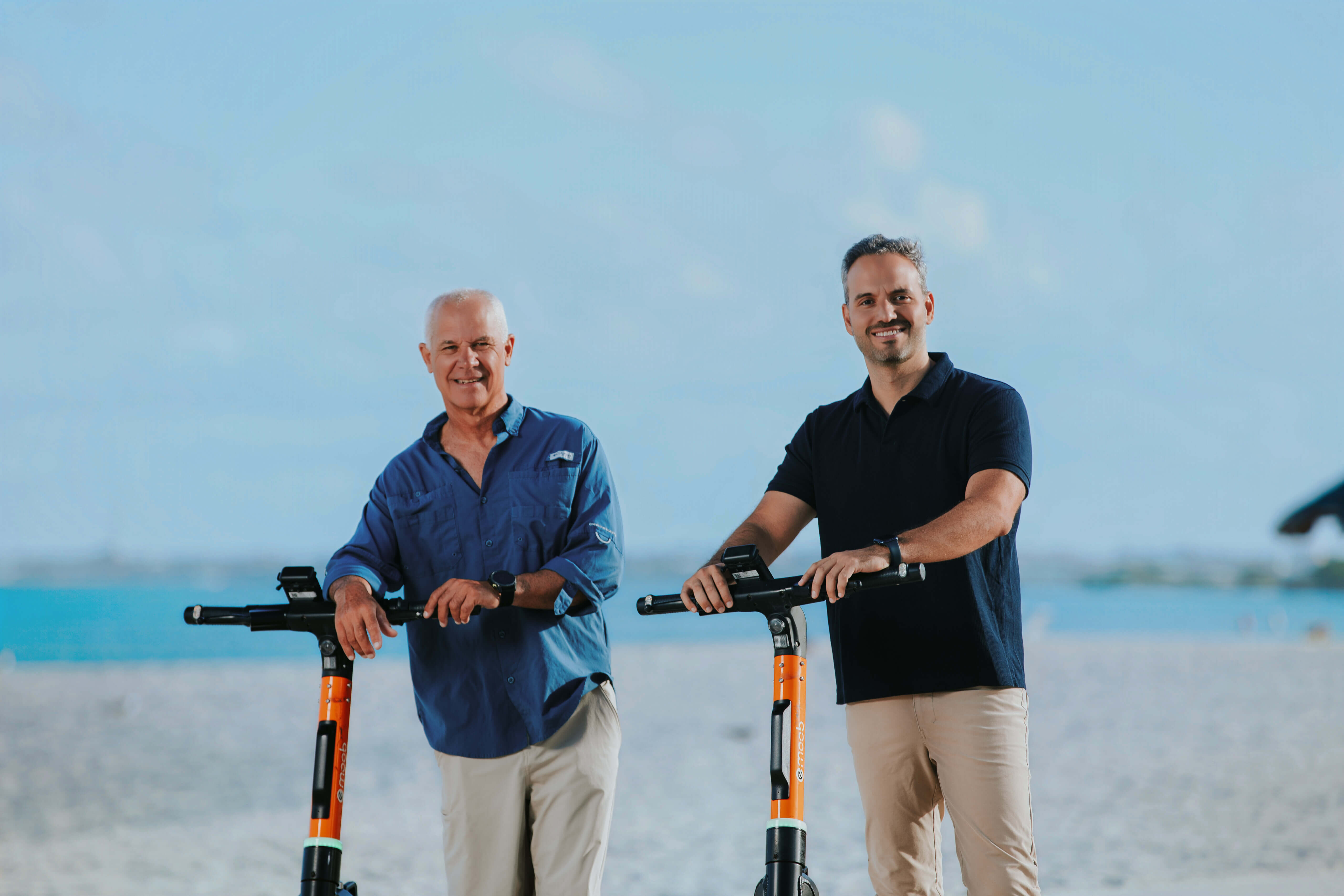

🌴 How e-moob became Aruba’s leading scooter operator 🚲⚡ From a Bird partnership in 2020 → to full independence with ATOM Mobility in 2023. Today: 150+ scooters in Aruba + fleet in Costa Rica. ⭐ 4.9/5 ranking on iOS & 4.8/5 on Android.
🌴 How e-moob became Aruba’s leading scooter operator 🚲⚡ From a Bird partnership in 2020 → to full independence with ATOM Mobility in 2023. Today: 150+ scooters in Aruba + fleet in Costa Rica. ⭐ 4.9/5 ranking on iOS & 4.8/5 on Android.
What began as a local partnership with Bird in 2020 has since grown into a fully independent scooter-sharing business with operations in Aruba and Costa Rica – and soon, mopeds in Spain. At the heart of this shift is e-moob’s decision to take full control of its fleet, its brand, and its technology. That control, Santos says, came with switching to ATOM Mobility.
Launch date: 2020 (with Bird), independent launch with ATOM Mobility in December 2024
Country: Aruba and Costa Rica
App Store: 4.9 / 5 ⭐
Google Play: 4.8 / 5 ⭐
Fleet: 150+ scooters in Aruba, smaller fleet in Costa Rica
Web page: https://e-moob.com
App Store: https://apps.apple.com/us/app/e-moob/id6642640340
Google Play: https://play.google.com/store/apps/details?id=e.moob.app
In a market as compact and tourism-driven as Aruba, micromobility is a unique challenge. There’s limited space, high operational costs, and intense competition for visitor attention. But for Luis Santos, co-founder of e-moob, it was also the perfect opportunity.
Starting in a market built for tourism
e-moob launched in Aruba, where the economy relies heavily on tourism - over 3 million visitors per year. Almost all of e-moob’s users are tourists, with 99% of rides coming from short-term visitors. The island’s layout and mild weather make it ideal for short scooter trips along the coastline, especially in popular resort areas.
“Aruba is a super small market, and it can get flooded quickly,” says Santos. “We learned from experience that we can’t go beyond 1,000 scooters here. So when we wanted to grow, we had to expand outside the island.”
That led to e-moob’s second market: Tamarindo, Costa Rica – another sunny, coastal town with a young, active tourist crowd. The business model remains the same: light, flexible mobility for short-distance use, tailored to tourism patterns.
Long setup, fast scale
Launching operations in Aruba wasn’t quick. “Before we even started, it took almost a year to get everything ready – registering the company, getting licenses, even just opening a bank account,” Santos explains.
The technical launch also had its challenges. When e-moob moved to its own brand using ATOM Mobility in December 2024, there were initial issues with starting rides due to firmware and hardware compatibility. “Some scooters couldn’t be unlocked properly, and we had a few tough days. But the team at ATOM Mobility helped fix it quickly, and within a week we had everything working smoothly.”
Before launching under the name e-moob, the team operated using their own brand called Evikes on the Bird platform. “That’s how Bird was working with partners back then,” says Santos. “It was our brand, but the operations were fully integrated with Bird’s system.” This setup helped them gain visibility among tourists – especially American visitors who already had the Bird app – but also came with limitations.

Switching to ATOM Mobility: Gaining control
Before launching under their own name, e-moob operated under Bird’s platform. While that brought initial visibility and trust – especially from American tourists who already had the Bird app installed – it came with limitations. All changes, pricing, or refunds had to go through Bird’s team. When parts or new scooters were needed, delays became a serious problem.
Eventually, the lack of flexibility pushed e-moob to go independent.
With ATOM Mobility, Santos and his team gained full control. “Now I can change prices, send bonuses, and refund directly. We also choose and buy our own units from Okai, instead of waiting for Bird. We manage customer service in-house. It’s been a major change.”
The result? e-moob is now operating at nearly the same revenue level with their new ATOM-powered fleet of 160 scooters as they were with their much larger Bird fleet of around 300 to 400 units. “We make almost the same amount of money with half the scooters,” says Santos. “That was an unexpected success.”
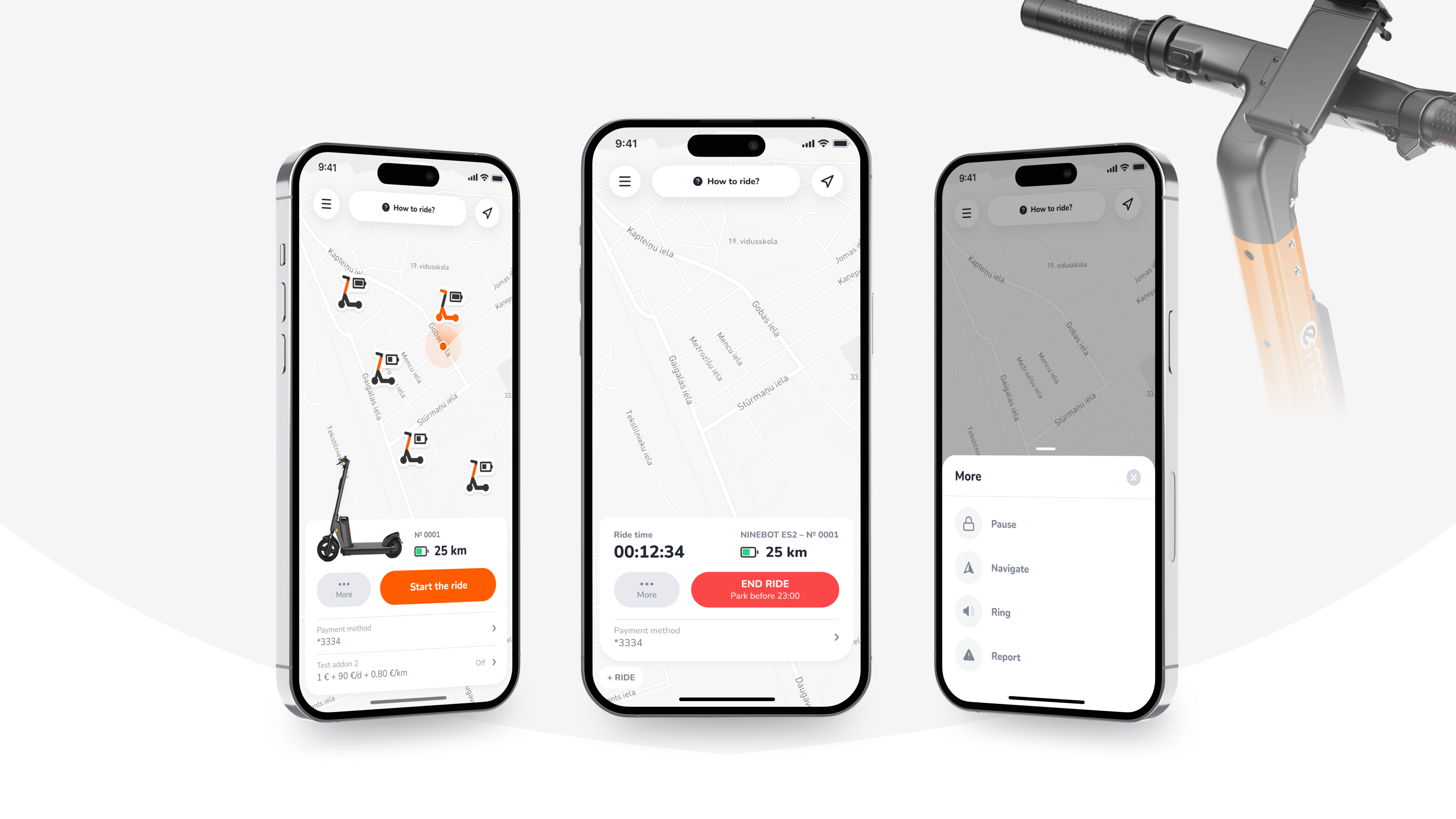
Adapting to the local market
Electricity prices in Aruba are high – around 2.5 times higher than in Miami – which directly impacts scooter charging costs. This shaped e-moob’s pricing strategy. Rides cost about $0.56 per minute and $1.07 to unlock, including the local 7% tax. These prices are slightly higher than in mainland U.S. markets but necessary to maintain profitability.
As for user features, subscriptions and loyalty programs haven’t played a big role yet. “Most of our users are tourists – they come, ride, and leave. There’s no long-term user behavior,” Santos explains.
Running the business day-to-day
Santos still handles customer support personally and uses ATOM’s admin tools daily to manage refunds, view ride history, and track issues. “We get very few support emails – maybe 10 to 15 a month, even with thousands of rides. Most issues come from signal delays when the scooters are in sleep mode.”
While e-moob doesn’t rely heavily on heatmaps or demand analytics (the team already knows exactly where to place the scooters in such a small market), the monthly dashboards and ride data remain useful for tracking performance.
Santos is also looking forward to using upcoming feature that allows tagging locations on the map – restaurants, hotels, or partner businesses – to increase visibility and engagement.
Challenges and strategic pivots
One of the biggest challenges came when Bird stopped supplying new hardware. “Our competitors arrived, and we needed new scooters, but Bird couldn’t deliver. We waited over a year, and that’s when we realized we had to build our own brand.”
Buying directly from Okai and using ATOM Mobility gave e-moob independence. It also opened the door to support multiple vehicle types. That’s essential for their next move: launching moped (Vespa-style) sharing in Spain.
“We’re already negotiating with suppliers,” says Santos. “We’re aiming to start next summer in Spain – our first European market. It’s a big step, especially since mopeds are a new category for us. New parts, new maintenance, new challenges. But we’re ready.”

Looking ahead: Europe and beyond
The moped launch in Spain isn’t just about growth. It’s a way to move into more scalable, tourism-driven markets. Aruba has reached its limit, and Costa Rica has proven slow to scale due to logistics and local bureaucracy. Europe offers a more mature market – and new opportunities.
e-moob is also in discussions with local delivery apps for third-party integrations. While current scooter zones are too limited to justify monthly fees, mopeds will expand the service range and open new B2B possibilities.
Santos is also exploring the potential of building stronger local loyalty by partnering with businesses and hotels. It’s a small use case, but one that could help bridge the gap between tourism and local use.
From hobby to ecosystem
Surprisingly, e-moob is a side business for Santos. His main company provides IT infrastructure for hotels and casinos, while he also manages a real estate firm and a smart home business in the U.S.
That existing network actually helped launch e-moob. “We started by placing scooters in private buildings developed by people I already worked with. Public spaces weren’t available at first, so private locations made it possible,” he recalls. “Now, we even have scooter parking inside the Ritz-Carlton and St. Regis hotels.”
Community, growth, and the power of being present
Santos regularly attends industry events like the Micromobility Conference. “It’s small, but valuable,” he says. “Meeting partners in person helps us move deals forward. Last year we made great connections. This year we’re closing our first moped deal because of those conversations.”
For Santos, success is not about buzzwords or fast scaling. It’s about growing smart, solving real problems, and building sustainable operations. “We’re proud of how far we’ve come. We’ve grown the fleet, expanded the business, and made something that works.”
Advice for new operators?
“Get full control from day one. Don’t depend on someone else’s rules,” Santos says. “The more control you have – over the operations, the pricing, the support – the better you can react to what your market really needs.”
With its strong base in Aruba, growing operations in Costa Rica, and exciting plans for Europe, e-moob is not just a scooter company – it’s a case study in smart, independent micromobility growth.
%20(1).png)
🚗 ATOM Mobility launches a new Web-booker for Digital Rental 🗓️ - letting customers book vehicles directly from the website. Frictionless, branded, and enabled by default for all rental merchants ✅
ATOM Mobility is introducing a new way for users to start their rental journey: the Web-booker widget 🗓️
With this tool, users can book a car (or other vehicle) directly from merchant's website without first downloading the rider app. It creates a smoother entry point for new users while keeping the app central for payments, ID verification, and ride management.
✅ A dedicated booking link for every merchant
✅ Customers choose area, vehicle, and rental period → confirm booking in seconds
✅ Widget syncs bookings into system automatically
✅ After booking, a QR code + App Store / Google Play links are shown so users can continue in the app
✅ In the mobile app, users finalize payment and ID/driver’s license verification before starting the trip
🎨 The widget matches app’s primary color for a seamless, branded look.
📊 Every booking now shows its Source – App, Web-booker, Dashboard, or API.
👉 Demo it here: app.atommobility.com/rental-widget
Many successful digital rental and mobility platforms combine web and app booking flows to maximize conversion.
Take Turo for example:
New ATOM Web-booker works the same way - creating an easy on-ramp from website, while letting the app handle verification and payments.
This feature also aligns with the broader industry evolution we covered in Traditional Car Rental vs Peer-to-Peer Car Sharing vs On-demand Car Sharing artticle. As booking models diversify, offering multiple access points - web + app + api – is becoming a standard expectation from customers.
The global car-sharing market (including peer-to-peer sharing) is projected to reach USD 28.7 billion by 2030, growing from USD 11.5 billion in 2025 at 20% annual growth rate, with digital-first players outpacing traditional operators. One of the biggest success drivers? Reducing onboarding friction and providing automated processes.
The message is clear: giving customers multiple, seamless entry points directly impacts conversion and utilization.
The Web-booker is enabled by default for all ATOM Mobility digital rental merchants for free. Just place the booking button on your website, and your customers are ready to go.
📩 Want to see how the Web-booker can boost your conversion and simplify rentals? Get in touch with our team and let’s set it up for you.

💸 ATOM Mobility launches “Offer your price” - a rider-controlled pricing feature. Riders can suggest higher or lower fares within pre-set limits. Boosts demand & helps stand out in competitive ride-hail markets 🚖🌍
The ride-hailing market is always changing. From Latin America to Eastern Europe, platforms like inDrive have popularized a new norm: letting riders suggest what they want to pay. Now, in response to this growing global trend, ATOM Mobility is proud to introduce: Offer your price – a fully configurable pricing feature built right into your rider app.
Available on all ride-hail projects, this feature lets riders propose a price – higher or lower than the default fare – within operator-set limits. Drivers can then accept or decline based on the offer.
Here’s how it reshapes the experience:
Your admin dashboard defines the limits – say, up to +500% from regular price and down to -30% – and the app calculates step sizes automatically:
Slider position adapts dynamically, depending on your defined range. And yes – the button color and style can be customized to match your brand 🎨.
You’ll find complete control and clarity:
In the driver app:
Real-world companies are already proving that rider-defined pricing works:
🚘 inDrive (LATAM, Africa, Asia)
Now one of the top global ride-hailing players outside the U.S. (over 200M downloads, active in 700+ cities across 45+ countries), inDrive built its brand around rider-negotiated pricing. It helps them stand out in price-sensitive markets and win over both drivers and passengers with more transparent pricing dynamics.
🚖 Comin (France)
A local success story, Comin has embraced flexible rider pricing to gain traction in several French cities (onboarded 6,000+ drivers). The feature gives them an edge against larger platforms, offering more freedom for users and better utilization for drivers.
These examples show that letting riders bid their price isn’t just a gimmick – it’s a growth strategy.
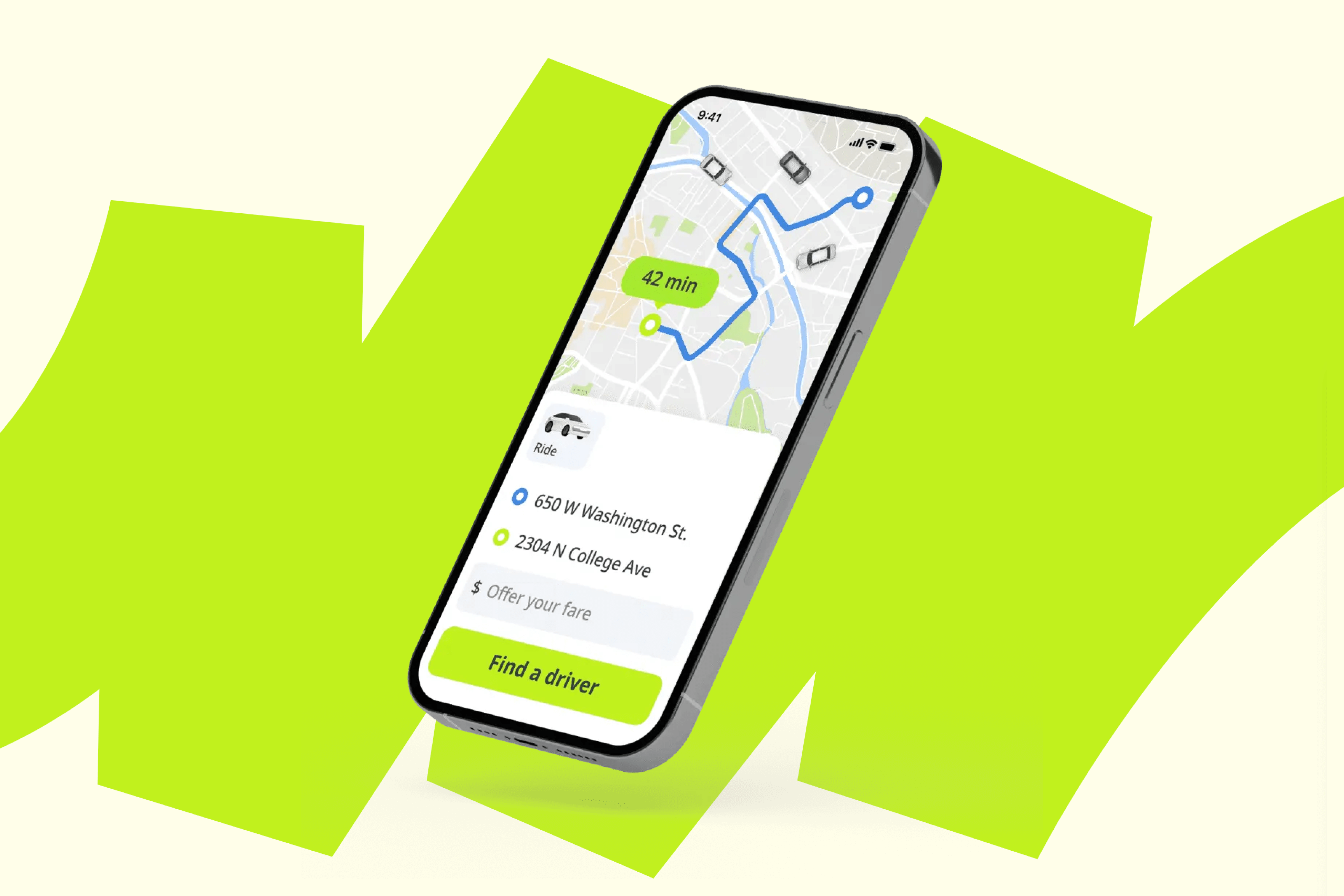
From our previosu blog “How to Find Your Niche in the Ride-Hail Market”, we saw how localisation and user control drive loyalty and conversion.
This new pricing flexibility supports:
This is just one of the 300+ features available in ATOM’s white-label ride-hailing platform.
Let’s talk about how to launch or upgrade your app with “Offer your price”, advanced pricing logic, and more tools to dominate your niche.
👉 Contact our team and explore how to become the market leader: www.atommobility.com